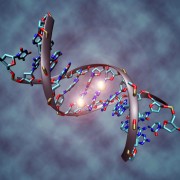Acoustic Array Biochip Combined with Allele-Specific PCR for Multiple Cancer Mutation Analysis in Tissue and Liquid Biopsy
Authors: Nikoletta Naoumi, Kleita Michaelidou, George Papadakis, Agapi E. Simaiaki, Román Fernández, Maria Calero, Antonio Arnau, Achilleas Tsortos, Sofia Agelaki, and Electra Gizeli
Journal: ACS Sens. (2022)
Abstract

Regular screening of point mutations is of importance to cancer management and treatment selection. Although techniques like next-generation sequencing and digital polymerase chain reaction (PCR) are available, these are lacking in speed, simplicity, and cost-effectiveness. The development of alternative methods that can detect the extremely low concentrations of the target mutation in a fast and cost-effective way presents an analytical and technological challenge. Here, an approach is presented where for the first time an allele-specific PCR (AS-PCR) is combined with a newly developed high fundamental frequency quartz crystal microbalance array as biosensor for the amplification and detection, respectively, of cancer point mutations. Increased sensitivity, compared to fluorescence detection of the AS-PCR amplicons, is achieved through energy dissipation measurement of acoustically “lossy” liposomes binding to surface-anchored dsDNA targets. The method, applied to the screening of BRAF V600E and KRAS G12D mutations in spiked-in samples, was shown to be able to detect 1 mutant copy of genomic DNA in an excess of 104 wild-type molecules, that is, with a mutant allele frequency (MAF) of 0.01%. Moreover, validation of tissue and plasma samples obtained from melanoma, colorectal, and lung cancer patients showed excellent agreement with Sanger sequencing and ddPCR; remarkably, the efficiency of this AS-PCR/acoustic methodology to detect mutations in real samples was demonstrated to be below 1% MAF. The combined high sensitivity and technology-readiness level of the methodology, together with the ability for multiple sample analysis (24 array biochip), cost-effectiveness, and compatibility with routine workflow, make this approach a promising tool for implementation in clinical oncology labs for tissue and liquid biopsy.
You may read the full paper here.
Acoustic Array Biochip Combined with Allele-Specific PCR for Multiple Cancer Mutation Analysis in Tissue and Liquid Biopsy









